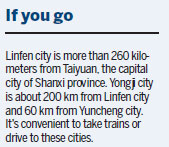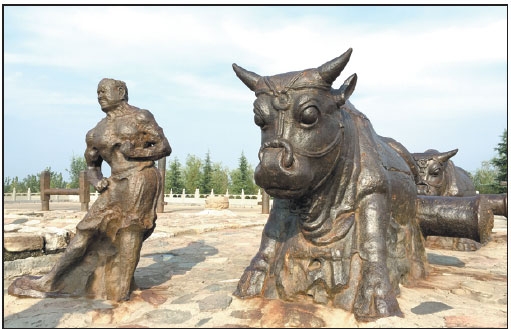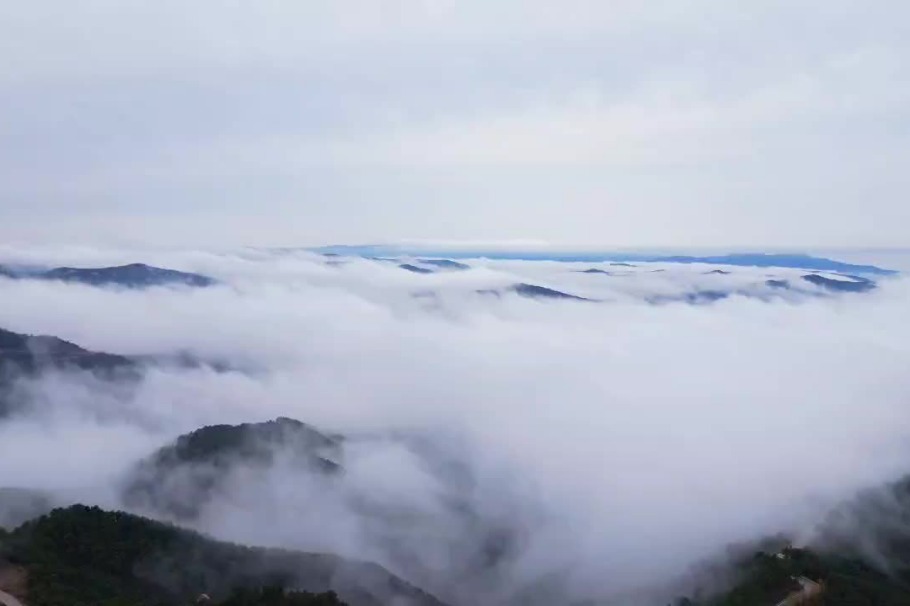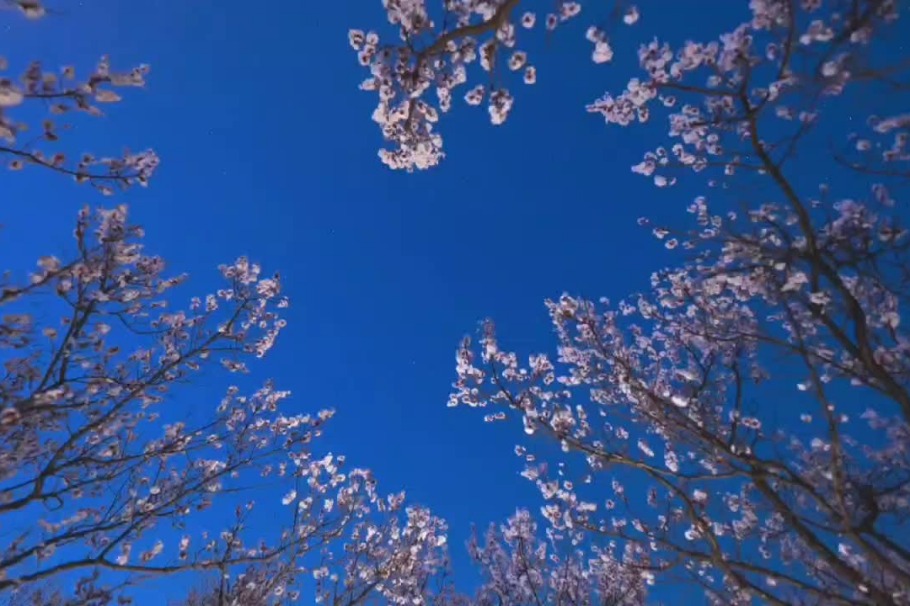Travel Handbook
Taosi ruins offer glimpses of early Chinese civilization
Updated:2015-10-26 08:35By Xu Lin And Sun Ruisheng In Shanxi ( China Daily)
Shanxi province nurtures an ancient civilization in the mid-section of the Yellow River, with picturesque natural scenery and cultural relics that showcase its important role in Chinese history.
China's second largest waterfall, the Hukou, is located in the border of Shanxi and Shaanxi provinces, about 45 kilometers from Jixian county, Linfen city.
Hukou, which literally means the spout of a teapot, vividly describes the magnificent scene when the 400-meter-wide Yellow River is blocked by mountains and suddenly pours through a deep groove of 30 to 50 meters' width.
Some old farmers who live nearby dress up their donkeys with colorful cloth and a large red flower on the animals' heads, offering rides to tourists for a small fee.
In winter, the waterfall turns into a frozen world of ice pillars and columns - a different kind of natural beauty.
Beyond the scenery, the Yellow River is the cradle of ancient Chinese civilization. Located in the northeast of Xiangfen county, Linfen city, the Taosi ruins span an area of about 2.8 million square meters and a history of 4,100 to 4,300 years.
Archaeologists have researched the site since 1978 and announced their discoveries this June.
They believe that Taosi was the capital of the sage emperor Yao, who lived in the middle reaches of the Yellow River at that time. It is recorded that Yao built his capital at Pingyang, the ancient name for Linfen, but there was no archaeological proof before.
The new studies indicate the existence of a civilized and hierarchical society, with fortifications such as walls and moats, funerary objects of wood furniture and kitchenware, and function areas including a royal palace, living area for nobles and mausoleums.

In 1984, the earliest Chinese characters were found on a pottery in the ruins. Experts identified one character as wen (literary), and argued the others looked like yao (the emperor Yao), yi (change) and ming (life).
The local government has applied to build a national park on the Taosi site to protect the ruins, display the various antiques and promote the archaeological discoveries.
In the Tang Dynasty (AD 618-907), Emperor Li Longji ordered the fabrication of eight iron oxen and eight iron men on the banks of the Yellow River, which were used to rivet the pontoon bridge of an ancient ferry, now long gone. The figures were later buried by silt as the river shifted; they were rediscovered in 1988 in Yongji city, Shanxi province.
Each ox is about 1.9 meters tall, 3 meters long and 1.3 meters wide, and weighs 40 tons. Under each tail is a horizontal shaft to fix the bridge.
At present, half of the iron figures no longer guard the Yellow River, but stand on the ground as relics of the ancient ferry. The oxen look muscular and majestic, stretching their chests and hind legs. It took seven years to remove rust from the sculptures and build a platform 12.2 meters above the original site for visitors. The remaining four pairs of man and beast are located about 360 meters away and remain underground.
Those who want to worship at temples can visit Yongji city's Pujiu Temple, the place where the love story of the drama Romance of the West Chamber took place in the Tang Dynasty.
Yuncheng city, only one hour's drive from Yongji city, is home to the largest Guandi Temple in China. It's dedicated to Guan Yu, a famous general during the Three Kingdoms Period (AD 220-280), who was born in Yuncheng.
Originally built in AD 589, the traditional complex has been rebuilt and expanded in the following centuries. Iron figures of men with lions on the temple grounds indicate that foreign envoys presented lions as gifts to the Chinese nation.
|
Iron oxen and iron men built during the Tang Dynasty (AD 618-907) stand where the Yellow River once flowed. They were used to rivet the pontoon bridge of an ancient ferry. Xu Lin /china Daily |




